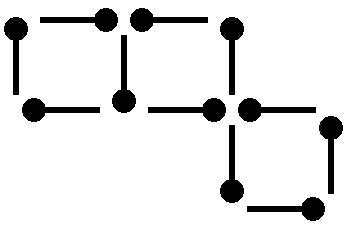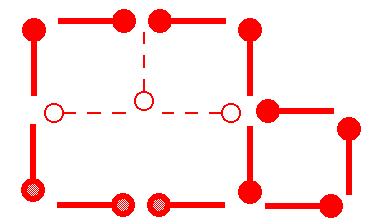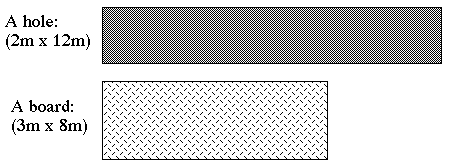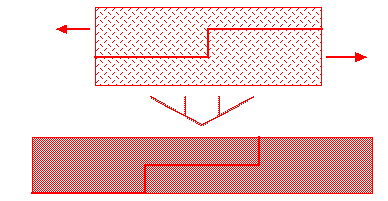Patterns in nature
History
Early Greek philosophers attempted to explain order in nature, anticipating modern concepts. Plato (c 427 – c 347 BC) — looking only at his work on natural patterns — argued for the existence of universals. He considered these to consist of ideal forms (εἶδος eidos: "form") of which physical objects are never more than imperfect copies. Thus, a flower may be roughly circular, but it is never a perfect mathematical circle.Pythagoras explained patterns in nature like the harmonies of music as arising from number, which he took to be the basic constituent of existence.Empedocles to an extent anticipated Darwin's evolutionary explanation for the structures of organisms.
The German psychologist
Adolf Zeising (1810–1876) claimed that the
golden ratio was expressed in the arrangement of plant parts, in the
skeletons of animals and the branching patterns of their veins and nerves, as well as in the geometry of
crystals.
In 1968, the Hungarian theoretical biologist
Aristid Lindenmayer (1925–1989) developed the
L-system, a
formal grammar which can be used to model
plant growth patterns in the style of
fractals.L-systems have an
alphabet of symbols that can be combined using
production rules to build larger strings of symbols, and a mechanism for translating the generated strings into geometric structures. In 1975, after centuries of slow development of the mathematics of patterns by
Gottfried Leibniz,
Georg Cantor,
Helge von Koch,
Wacław Sierpiński and others,
Benoît Mandelbrot wrote a famous paper,
How Long Is the Coast of Britain? Statistical Self-Similarity and Fractional Dimension, crystallising mathematical thought into the concept of the
fractal.
Causes
Living things like orchids, hummingbirds, and the peacock's tail have abstract designs with a beauty of form, pattern and colour that artists struggle to match.[18] The beauty that people perceive in nature has causes at different levels, notably in the mathematics that governs what patterns can physically form, and among living things in the effects of natural selection, that govern how patterns evolve.
Mathematics seeks to discover and explain abstract patterns or regularities of all kinds.Visual patterns in nature find explanations in
chaos theory, fractals, logarithmic spirals, topology and other mathematical patterns. For example,
L-systems form convincing models of different patterns of tree growth.
The laws of
physics apply the abstractions of mathematics to the real world, often as if it were
perfect. For example, a
crystal is perfect when it has no structural defects such as dislocations and is fully symmetric. Exact mathematical perfection can only approximate real objects.Visible patterns in nature are governed by
physical laws; for example,
meanders can be explained using
fluid dynamics.
Types of pattern
Symmetry
Among non-living things,
snowflakes have striking
sixfold symmetry: each flake's structure forming a record of the varying conditions during its crystallisation, with nearly the same pattern of growth on each of its six arms.
Crystals in general have a variety of symmetries and
crystal habits; they can be cubic or octahedral, but true crystals cannot have fivefold symmetry (unlike
quasicrystals).Rotational symmetry is found at different scales among non-living things including the crown-shaped
splash pattern formed when a drop falls into a pond,and both the
spheroidal shape and rings of a
planet like
Saturn.
Symmetry has a variety of causes. Radial symmetry suits organisms like sea anemones whose adults do not move: food and threats may arrive from any direction. But animals that move in one direction necessarily have upper and lower sides, head and tail ends, and therefore a left and a right. The head becomes specialised with a mouth and sense organs (
cephalisation), and the body becomes bilaterally symmetric (though internal organs need not be).More puzzling is the reason for the fivefold (pentaradiate) symmetry of the echinoderms. Early echinoderms were bilaterally symmetrical, as their larvae still are. Sumrall and Wray argue that the loss of the old symmetry had both developmental and ecological causes.
Reference from Wikipedia.




 is an even perfect number whenever
is an even perfect number whenever  is a prime of the form
is a prime of the form  for prime
for prime  —what is now called a
—what is now called a ![{\begin{aligned}6&=2^{1}(2^{2}-1)&&=1+2+3,\\[8pt]28&=2^{2}(2^{3}-1)&&=1+2+3+4+5+6+7=1^{3}+3^{3},\\[8pt]496&=2^{4}(2^{5}-1)&&=1+2+3+\cdots +29+30+31\\&&&=1^{3}+3^{3}+5^{3}+7^{3},\\[8pt]8128&=2^{6}(2^{7}-1)&&=1+2+3+\cdots +125+126+127\\&&&=1^{3}+3^{3}+5^{3}+7^{3}+9^{3}+11^{3}+13^{3}+15^{3},\\[8pt]33550336&=2^{12}(2^{13}-1)&&=1+2+3+\cdots +8189+8190+8191\\&&&=1^{3}+3^{3}+5^{3}+\cdots +123^{3}+125^{3}+127^{3}.\end{aligned}}](https://wikimedia.org/api/rest_v1/media/math/render/svg/9fa183786d803ce1cab48875dabc4b697ee59225)


 , and divide both sides by n):
, and divide both sides by n): ;
; , etc.
, etc. formed as the product of a
formed as the product of a  with a power of two in a similar way to the construction of even perfect numbers from Mersenne primes.
with a power of two in a similar way to the construction of even perfect numbers from Mersenne primes. , where c > 0 is a constant.In fact it is
, where c > 0 is a constant.In fact it is  , using
, using